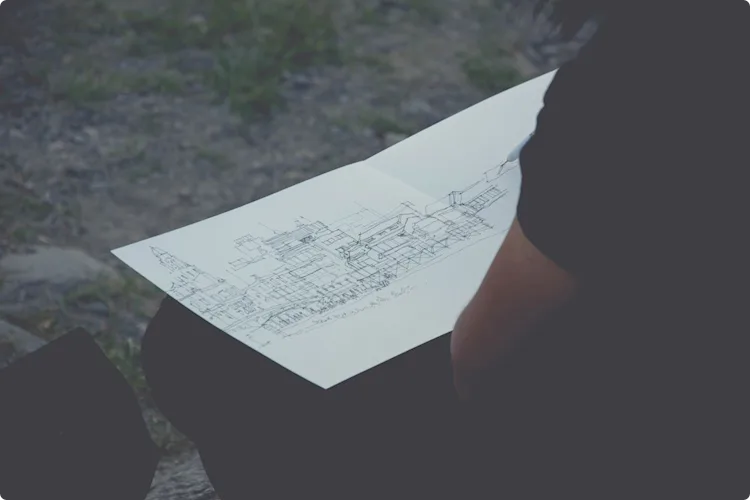Applying for planning permission is one of the less exciting tasks involved in a home improvement project. However, homeowners need to dot the i’s and cross the t’s before starting work on their homes, especially if their project falls outside of permitted development.
Everyone has a dream home in mind, and if we’ve saved up enough to afford an extension or renovation, we want to know our dream is possible. So, to avoid the crushing disappointment of a rejected application, how do we ensure our projects are set up for planning approval?
Why would planning permission be refused?
The first thing to understand is why planning permission is denied in the first place.
You’re likely to face the sting of rejection if your design-build:
- Overshadows a neighbour, which causes a loss of light;
- Overlooks other homes, causing a loss of privacy;
- Appears out of character with the existing property;
- Is overdeveloped (read more);
- Impacts highway safety;
- Uses hazardous materials such as asbestos or lead;
- Impacts protected trees;
- Restricts road access;
- Is in a listed building; and
- Has a negative effect on nature conservation. For example, badger habitats are protected under the Wildlife and Countryside Act 1981.
These are just some of the common reasons a project may be rejected in the planning stages.
What factors affect planning permission?
Depending on your local authority, there are several factors councils consider before signing off on your home improvement project. These include:
- Local planning policies (read more here)
- Nature, wildlife, and biodiversities, such as green belt land and protected conservation areas
- Bats that might be affected by your home improvement project (they’re a protected species)
- Building regulation compliance
- Designs that don’t meet the required standards
- Errors with the design and access statement submission, including missing information
- Sustainability initiatives
- Environmental health, such as noise or air quality issues
Can my neighbours block planning permission?
As long as your proposals don’t unduly affect them, your neighbours can’t stop your building works from going ahead. However, they’re able to request additional details, which results in extra expenses and takes longer for approval to go through. That’s why it’s always a good idea to chat to your neighbours (and maybe take over a muffin basket?) before applying for planning permission.
Either way, they can’t stop you from carrying out the building works. There’s a Party Wall Act that aims to protect your neighbouring properties and ensure they’re not adversely affected by your building work. So, be sure to have this completed and signed off asap.
It’s also worth noting your neighbours have a 21-day consultant period after they’re made aware of an upcoming project. If they don’t respond within the allotted time, they must forever hold their peace. Some councils print out notices and put them on lamposts near the property, while others write to your neighbours. Even if your neighbours do respond, the council will consider the legitimacy of any complaints.
Reasons councils can’t reject planning permission
It’s important to note planning applications aren’t as scary as they seem. For instance, did you know you can’t be rejected for planning permission based on:
- The time it’ll take to do the work.
- Whether your project decreases the value of your property.
- Your age, health, status, or background.
- Your planning history. For example, if your planning application was rejected for a previous project, this won’t affect your current application.
- A neighbour's opinion, which isn’t supported by planning policy. For example, if they’re concerned about noise, this isn’t a reason to reject planning permission. However, if they’re concerned about your design-build overshadowing their garden, this is a legitimate concern supported by policy.
- Private agreements (aka planning obligations), which are Section 106 agreements based on the same section in the 1990 Town & Country Planning Act. They’re made between local authorities and developers to allow a project to go ahead, even if it’s something planning permission would normally reject. In these cases, the land itself (rather than the person or organisation that develops the land), is bound by a Section 106 Agreement.
Furthermore, if you want to avoid a planning disaster, your best option is to employ an architect to manage this process for you. Not only will they deal with the nitty-gritty of preparing your documentation, such as planning applications or lawful development certificates, but during the design process, they’ll use their expertise and experience to create drawings that have the best chance of approval.





